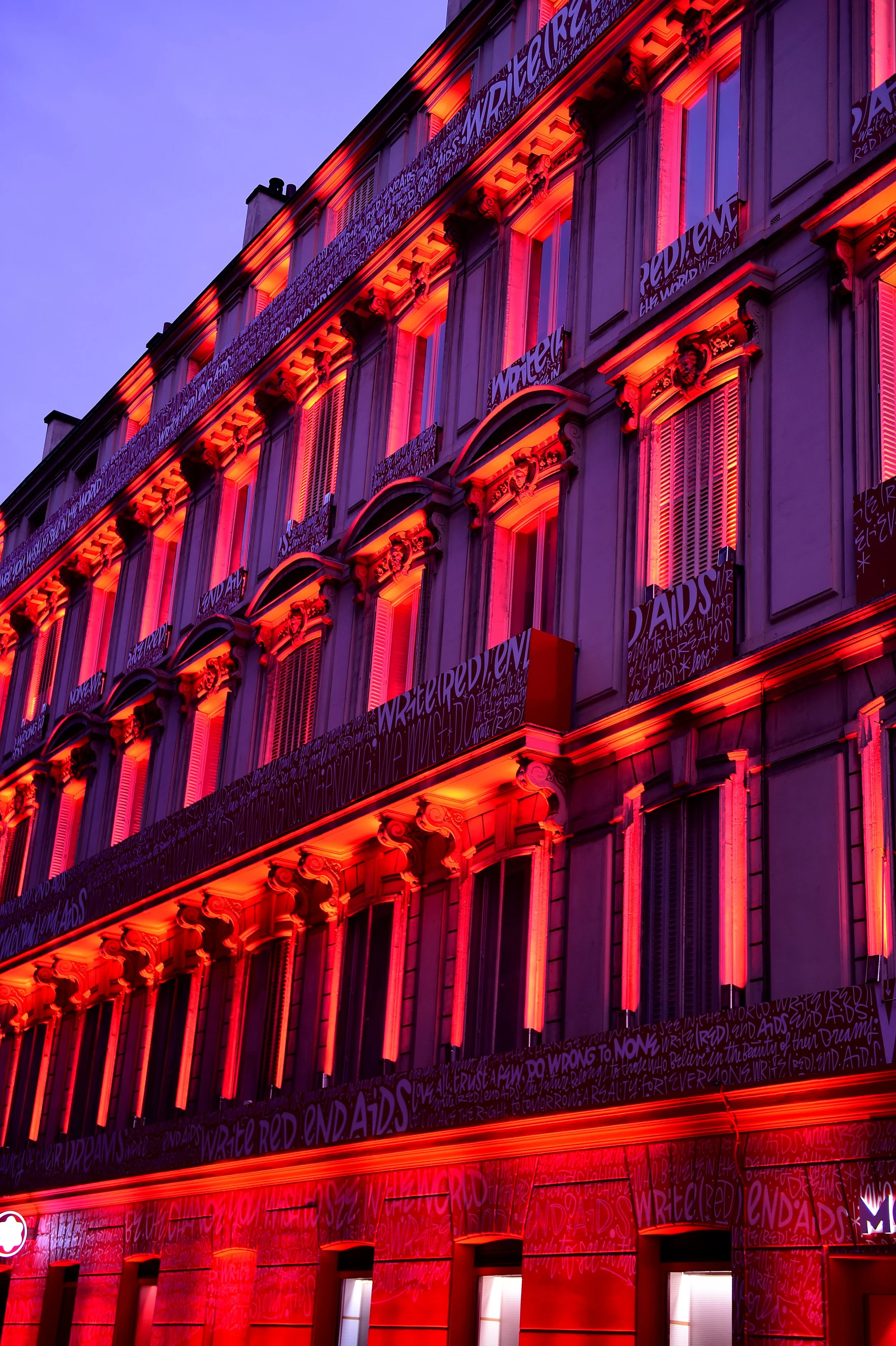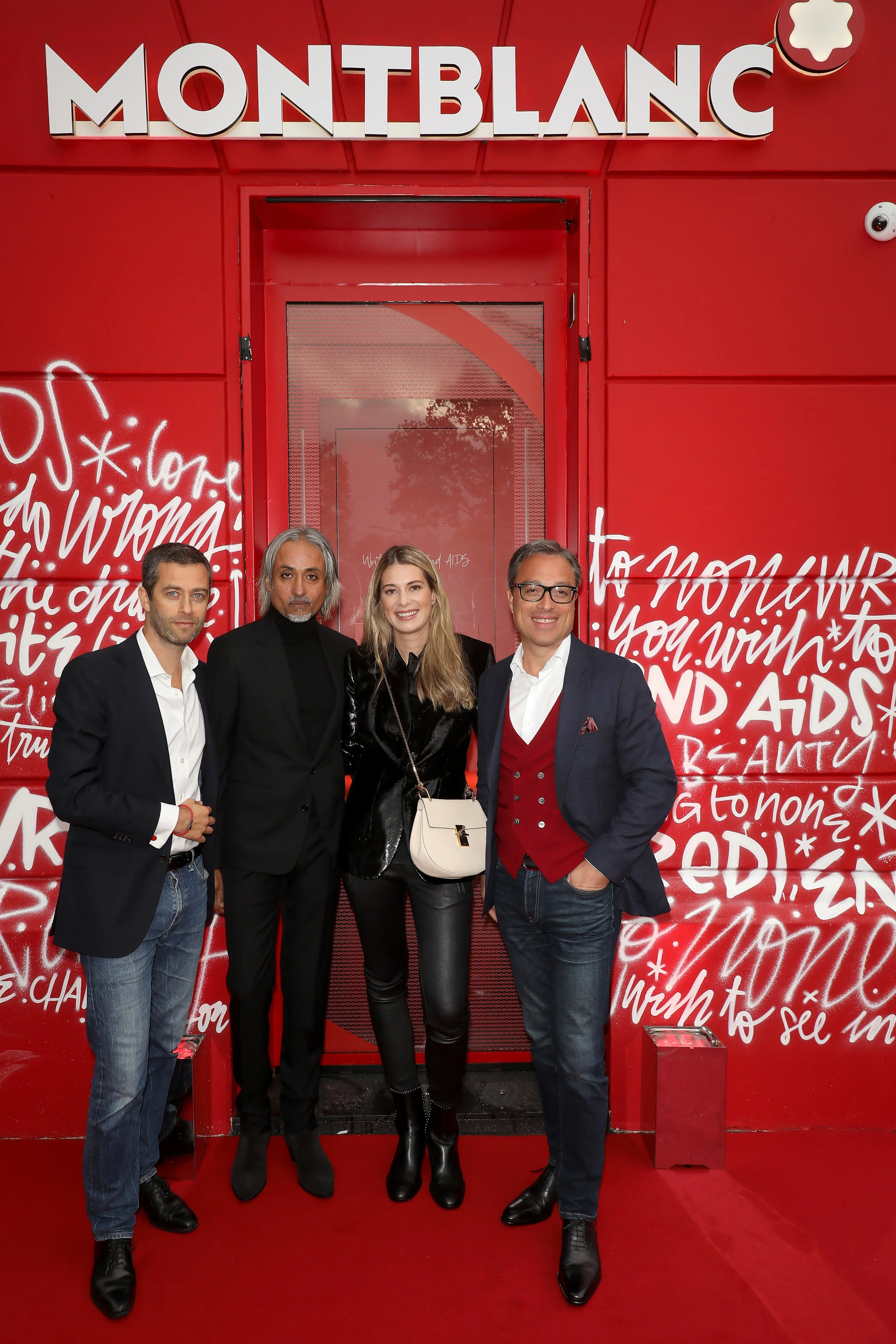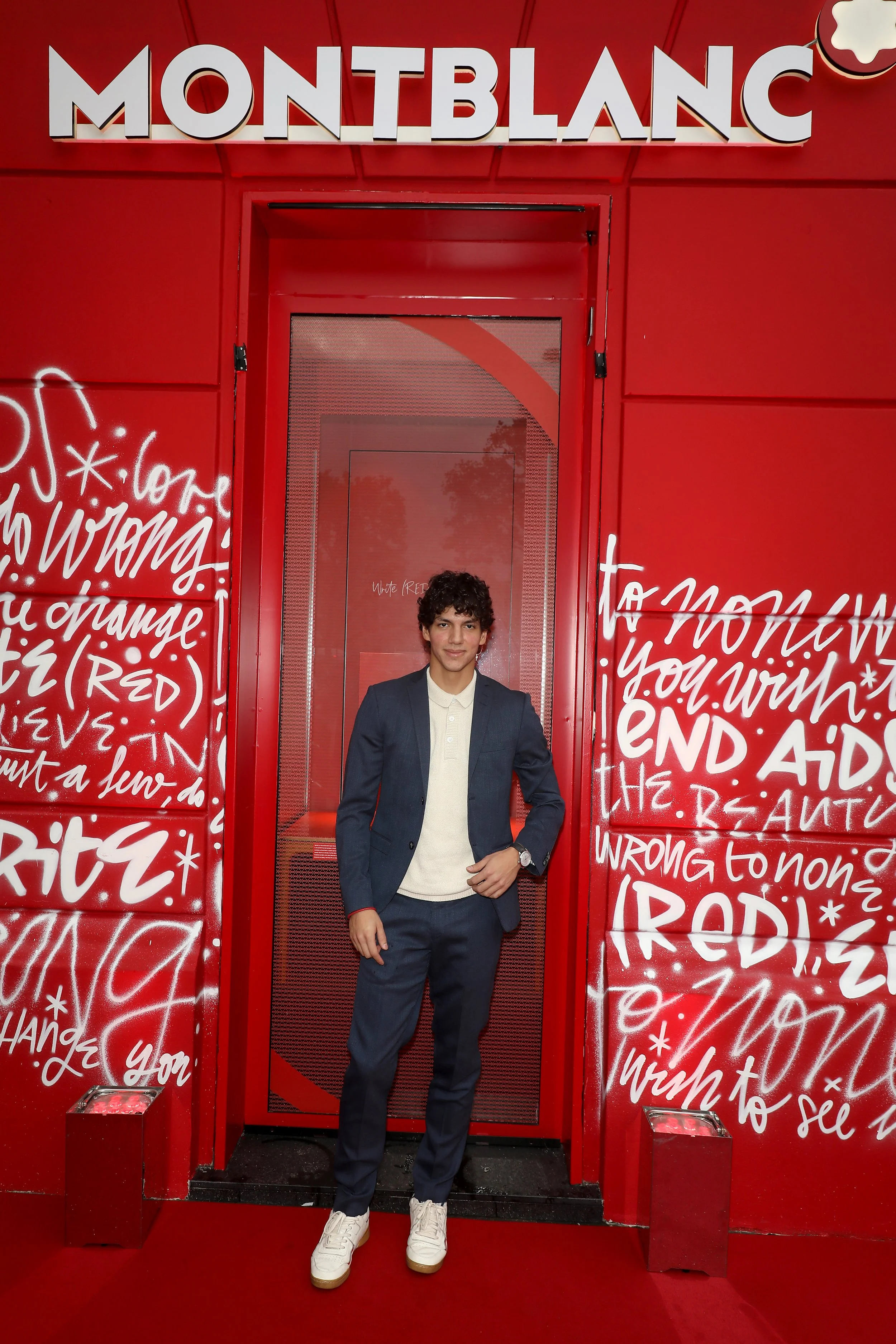When Luxury Turned Red

When Montblanc turned Paris red, I learned the future of luxury isn’t the front row—it’s community
Paris, 2019.
A boutique washed in red. Not just a lighting scheme, but a choice about where to put attention: on craft, yes—but also on life. The Montblanc x (RED) activation was ostensibly a product launch. What it felt like, inside the room, was a recalibration.
It was my first time working with an international team end to end. I lived in Paris a little over three months for this project, learning a new pace of collaboration—ideas traded in two languages, approvals pinging past midnight, tiny details negotiated with care: the angle of a display, the timing of a toast, the way copy lands on a wall when you’re five feet in front of it. The connections from that season have lasted; I’m still in touch with executives, their assistants, and the creatives who’ve since stepped into leadership. You could feel people leveling up in real time.
What I loved most was how the guest list looked once the doors opened. It wasn’t a room curated to keep people apart; it was a room designed to make them overlap. Clients stood next to stylists, journalists next to junior coordinators, hoteliers next to activists and artists. Status didn’t run the conversation. Community did. You could sense the relief that comes when the velvet rope is symbolic rather than literal—when everyone inside understands the point and is willing to carry it together.
That’s where a lesson clicked for me: the next era of luxury isn’t a front row; it’s a circle. It’s what happens when a brand chooses to host, not just display. When the evening’s choreography nudges strangers into a shared purpose—here, supporting the fight against AIDS—product becomes an instrument rather than the whole song. The event moved like this: intimacy first, message second, press last. In other words, design the room before the coverage. Let the story earn its amplification because it mattered to the people who were actually there.
Working across teams taught me how much that intimacy depends on invisible labor. The assistants who kept the run of show moving. The coordinators who sourced candles at the eleventh hour. The security lead who understood that hospitality and safety are twins. The copy edit that took the edge off a phrase so it read as dignity instead of pity. When an event feels effortless, it’s because someone fought for the small things you’ll never see in a campaign recap.
The (RED) frame also asked something clarifying: not just “what are we unveiling?” but “what are we underwriting?” The answer, that night, was straightforward. A portion of proceeds would support the work to end AIDS. The room didn’t perform charity; it practiced alignment. There’s a difference, and people can feel it. The conversations at the tables weren’t about who was photographed; they were about what might be possible if houses made this posture a habit—build community, then let publicity follow.
Months like those rewired how I think about our work at Prophecy Brand. “Luxury as community” isn’t a slogan; it’s a production choice. It’s deciding that the most valuable outcome of a launch is the relationships it convenes and strengthens—relationships that outlive the florals and the press release. It’s measuring success not only by coverage, but by the calls that happen two days later because someone in that room introduced two people who should have met years ago.
I still remember the quiet moments—someone adjusting a cufflink for a guest they’d just met; a junior publicist passing a phone charger across the room; a chef explaining the restraint behind a single, perfect bite. All small gestures, all evidence that the evening’s real asset was how people treated each other. That’s what stays. That’s what scales.
When I think back on 2019, I don’t recall a list of names so much as a feeling: a house opening its doors to a cause, a city answering, and a community forming in the space between. If luxury is attention, then the choice is simple—aim it where it does the most good, and invite everyone in the room to carry a piece of the weight.
That night turned the color red into a verb. And it taught me what I now consider the rule: design for belonging, and the story will travel on its own.













































































































